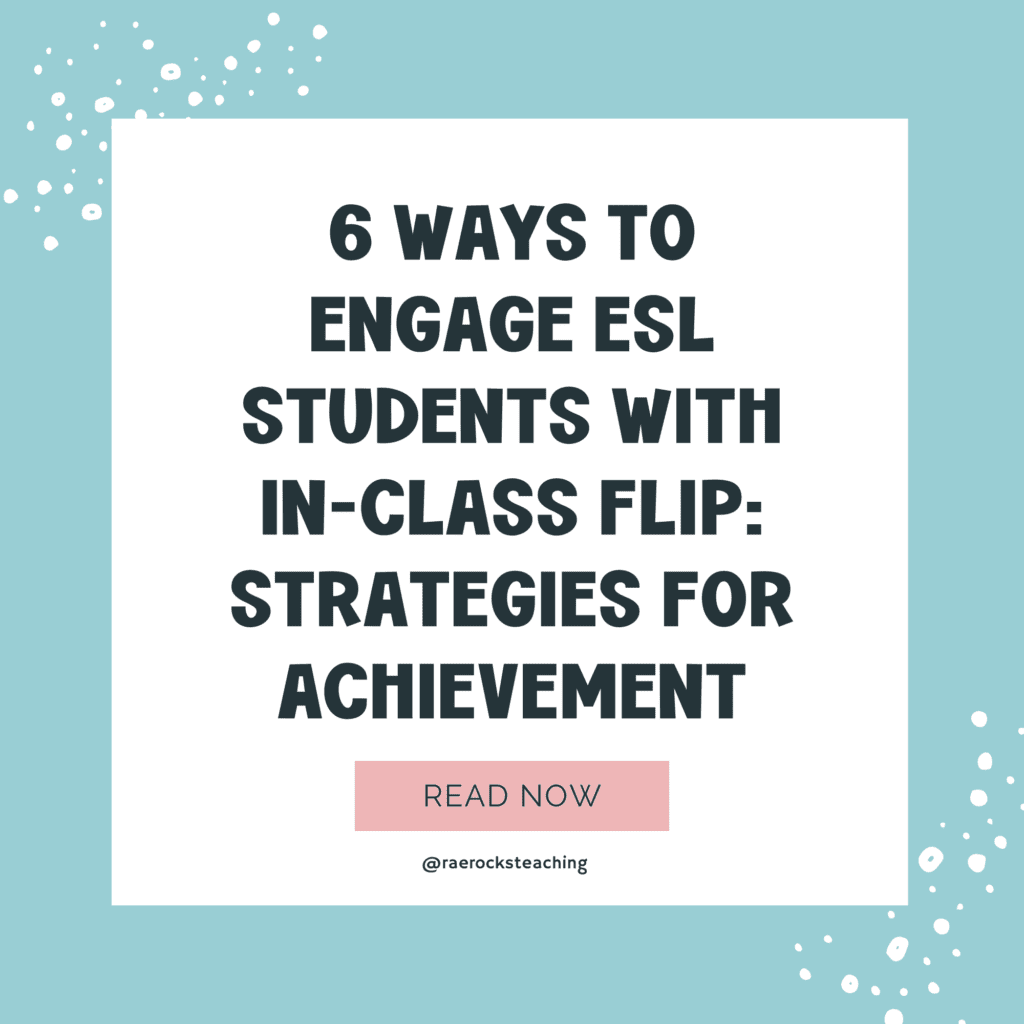Teaching a classroom with a mix of English language learners (ESL students) and low-level learners can feel like navigating a maze. You want to keep everyone engaged, but it’s challenging to balance the different learning needs of your students. The in-class flipped classroom model offers an effective way to meet these needs, providing structure and flexibility to support ESL education and help struggling students succeed.
Looking for more ways to engage your lessons in class?
In the traditional flipped classroom, students watch instructional videos at home. In the in-class flip, however, they watch videos during class, giving you more time to guide and support students right then and there. This model is particularly useful for ESL students, as it allows them to interact with content at their own pace, with the teacher available for real-time assistance. The key to making the in-class flip work is implementing the right strategies, along with helpful ESL resources for teachers. Let’s dive into some actionable ways to ensure the in-class flip is accessible and engaging for ESL students and struggling learners.
1. Incorporate Visuals and Multimodal Content
For ESL students, language barriers can make it difficult to fully grasp content through verbal instruction alone. The in-class flip allows you to blend various formats—videos, visuals, and interactive elements—to make lessons easier to understand.
How to fix it:
Choose video content that’s rich in visuals and uses simple language. Whether you’re teaching about the circulatory system or cell division, using diagrams, animations, and illustrations helps ESL students grasp concepts even if they’re struggling with language comprehension. This multimodal approach also works well for low-level learners who need more than text-based explanations.
Another way to make your videos more accessible is by using subtitles or captions in both English and the students’ native language. This not only aids language acquisition but helps reinforce scientific terms.
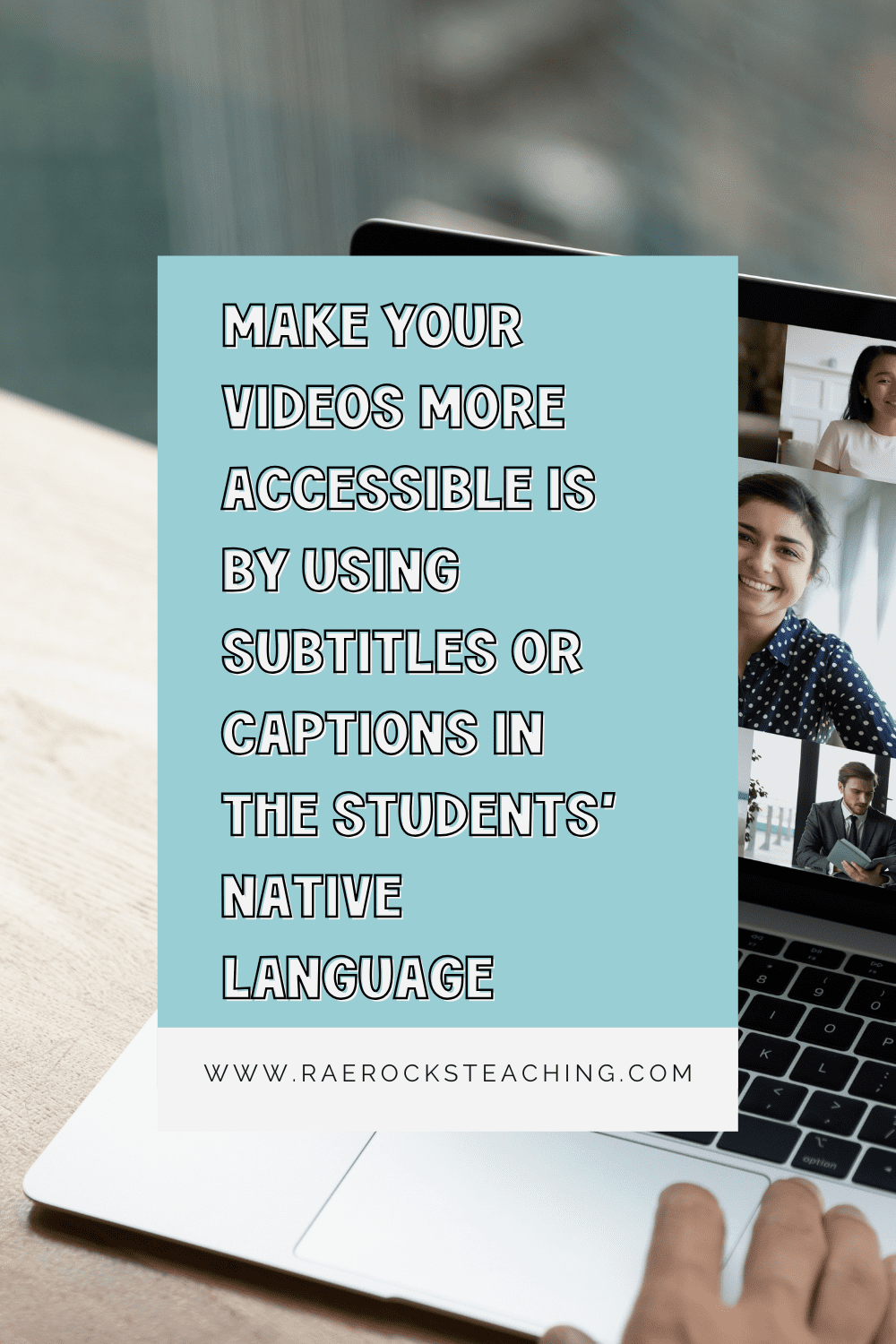
-
Save
Actionable tip:
Tools like Edpuzzle let you embed guiding questions into videos and give extra explanations as needed. For biology and anatomy lessons, pair complex concepts like photosynthesis or DNA replication with short, annotated video segments that break down the process visually. These video tools are a great addition to your ESL resources for teachers, helping both you and your students.
2. Scaffold Learning with Sentence Frames and Key Vocabulary
Scaffolding is essential in ESL education, as it helps build students’ confidence and understanding of new material. The in-class flip is a perfect opportunity to scaffold lessons by breaking down content into manageable pieces for ESL students and struggling learners.
How to fix it:
Create sentence frames and key vocabulary lists for each lesson. After students watch a video, provide them with structured phrases they can use to discuss the content. For example, if the lesson is about the skeletal system, give them starters like “The femur is important because…” or “Bones protect our organs by…”. These sentence frames allow ESL students to participate in discussions without the pressure of constructing complex sentences on their own.
For low-level learners, simplify scientific terms and link them to images or diagrams. This strategy gives them the foundational language needed to express ideas and participate in class without feeling overwhelmed.

-
Save
Actionable tip:
Before each unit, develop a list of key terms with simple definitions and visual aids. For example, when covering the respiratory system, include terms like “lungs,” “oxygen,” and “alveoli,” with clear definitions and matching images. These ESL resources for teachers help make technical content more approachable.
3. Promote Peer Support and Collaboration
Peer support is a cornerstone of ESL education. The in-class flip gives students plenty of opportunities for peer collaboration, which can be incredibly beneficial for ESL students. Interacting with native speakers and stronger students helps reinforce both content and language skills.
How to fix it:
After students watch a video, organize them into small, diverse groups where ESL students can work alongside native speakers or more advanced learners. Assign collaborative tasks, like building models of the circulatory system or solving a problem related to genetics. These group activities let students practice both the content and the language in a low-pressure setting.
By pairing ESL students with helpful peers, you create a supportive environment where they can ask questions, practice speaking, and clarify their understanding without feeling singled out.

-
Save
Actionable tip:
Consider using a “buddy system” where ESL students are paired with a peer who can offer extra support throughout the lesson. Make sure to rotate buddies regularly to encourage social interaction and language practice. These pairings can be a valuable addition to your ESL resources for teachers, helping to build classroom community.
4. Break Down Content with Chunking and Processing Time
When working with ESL students or struggling learners, throwing too much information at them at once can be overwhelming. That’s where chunking comes in handy. The in-class flip lets you break videos and lessons into smaller, more digestible sections.
How to fix it:
Instead of playing a 20-minute video all at once, divide it into smaller segments. After each segment, give students time to process the information through discussions, quick check-ins, or group activities. For example, if you’re teaching about the digestive system, play a short clip on how the mouth and esophagus function, then stop for discussion before moving on to the next stage.
By chunking the information, you give ESL students time to process, ask questions, and review key vocabulary, making the content more accessible.
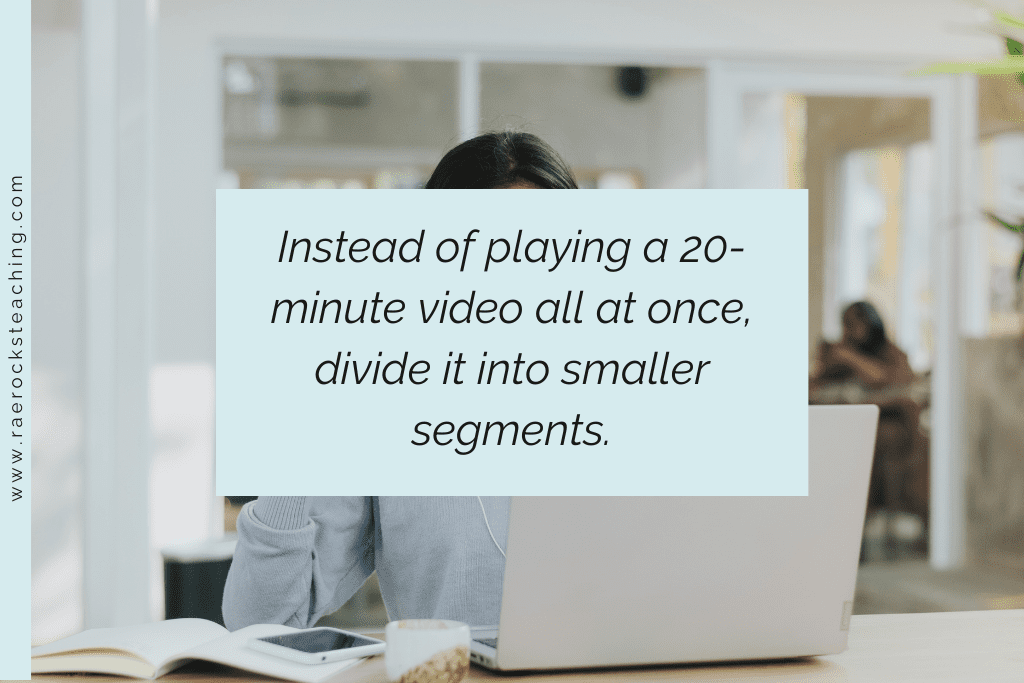
-
Save
Actionable tip:
Set up “pause points” in the video where students stop, discuss, or complete a short activity. These breaks allow ESL students to catch up and better retain the material.
5. Reinforce Learning with Repetition
Repetition is a key element in ESL education, helping students retain both vocabulary and content. The in-class flip allows for flexibility in how often students review the material, making it easier to reinforce learning.
How to fix it:
Encourage students to re-watch videos as needed, especially if they’re struggling with certain concepts or vocabulary. Provide low-stakes quizzes, practice exercises, and hands-on activities after each video to reinforce key ideas. This repetition is especially useful for ESL students, who may need multiple exposures to the same material before fully grasping it.
For struggling learners, offer multiple ways to engage with the material—videos, reading, and hands-on activities—to make sure they’re exposed to the content in different formats.
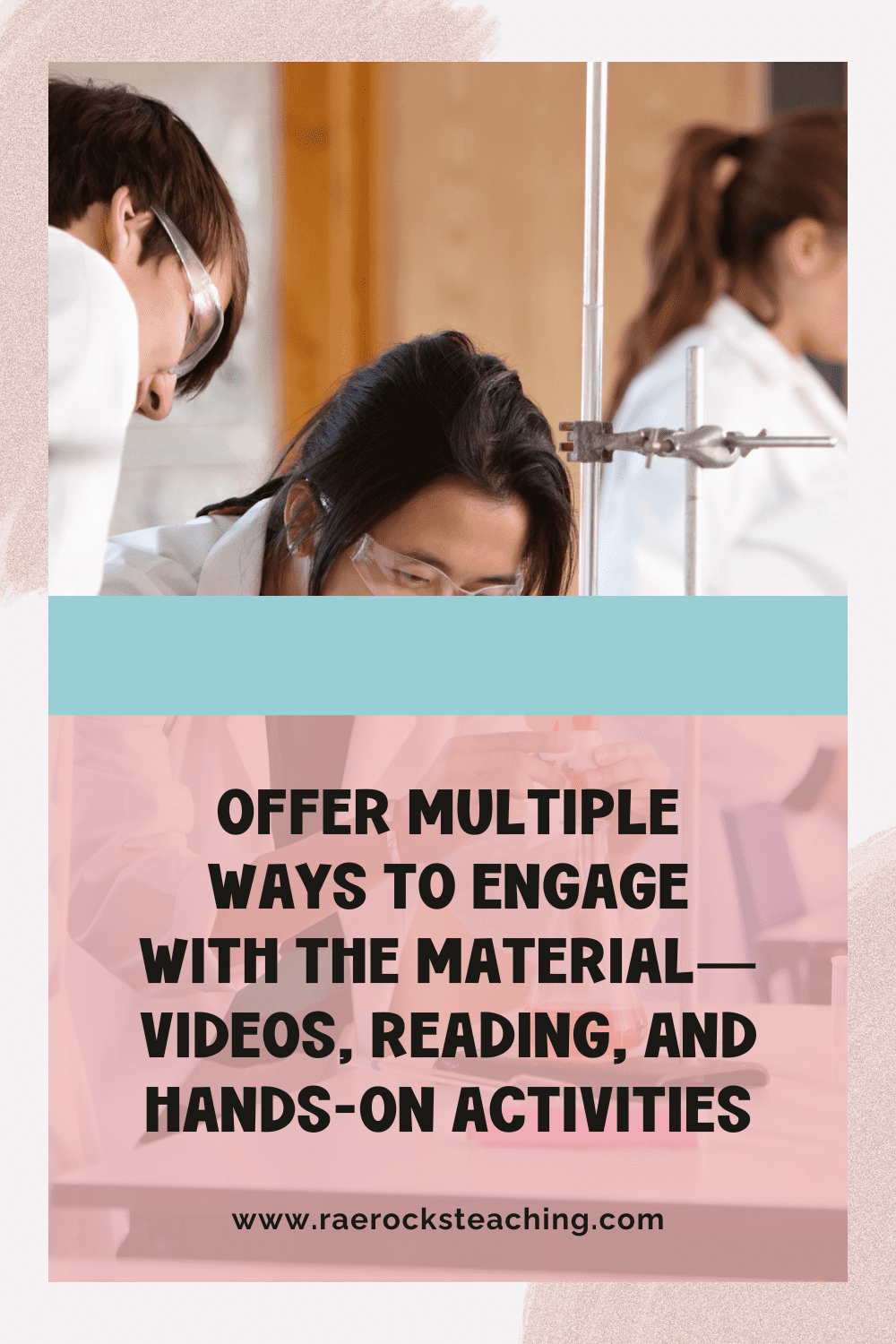
-
Save
Actionable tip:
Use tools like Quizlet to create flashcards that reinforce key vocabulary and concepts. This resource can be used for review at any point during the unit and is especially helpful as a quick self-study tool for ESL students.
6. Establish Clear Routines
Consistency is crucial for ESL students and low-level learners. A predictable classroom routine helps ease anxiety and keeps students focused on the content rather than trying to figure out what comes next.
How to fix it:
Create a routine for how students engage with the in-class flip. For instance, start each class by reviewing the agenda, then allow time for students to watch videos, followed by small group discussions or practice activities. This structure allows ESL students to anticipate what’s coming, which reduces confusion and increases engagement.
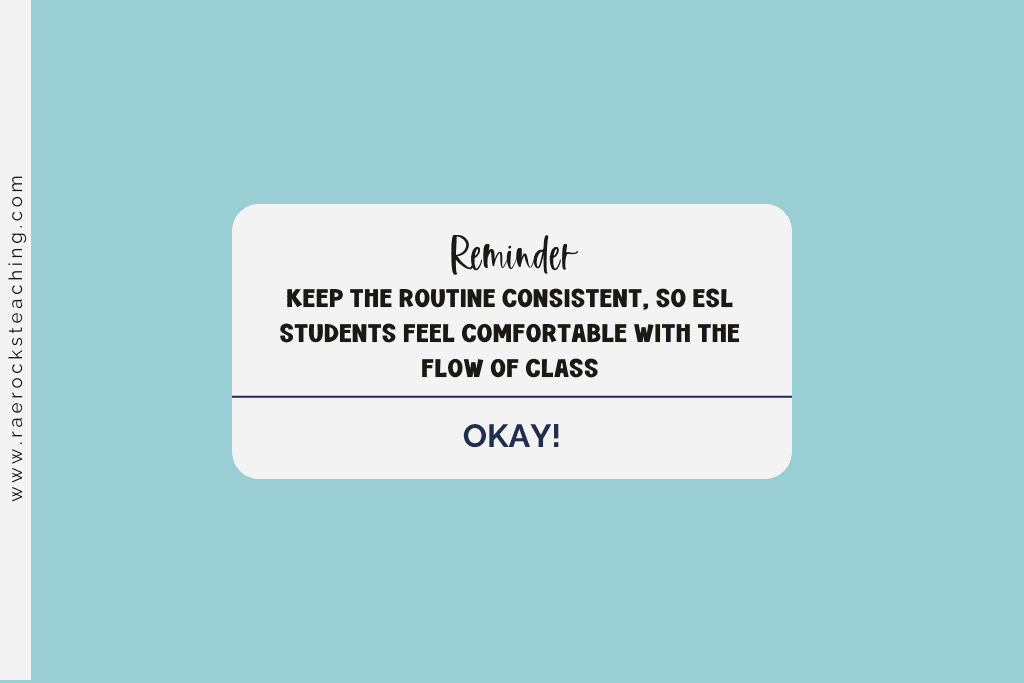
-
Save
Actionable tip:
Post instructions on the board and use visual cues to show what step students should be on. Keep the routine consistent, so ESL students feel comfortable with the flow of class and know what to expect.
So, in a nutshell…
The in-class flip is an effective way to engage ESL students and low-level learners by providing a flexible, supportive learning environment. Through the use of visuals, scaffolding, peer support, and repetition, you can ensure that all students have access to the tools they need to succeed. By leveraging the right ESL resources for teachers, you can create a classroom that is engaging and accessible for every student, regardless of their language or learning level.
Don’t forget to Sign up for the FREE GUIDE | Flip & Thrive: Your 5-Step Quickstart Guide to a More Engaging Classroom

-
Save
I love sharing helpful content with y’all and would love to connect on IG or Facebook. I’m on TikTok too! Follow me and send me a DM with what you need more of because I’m here to help! If you are looking for even more inspiration, find me on Pinterest!
Share via:

